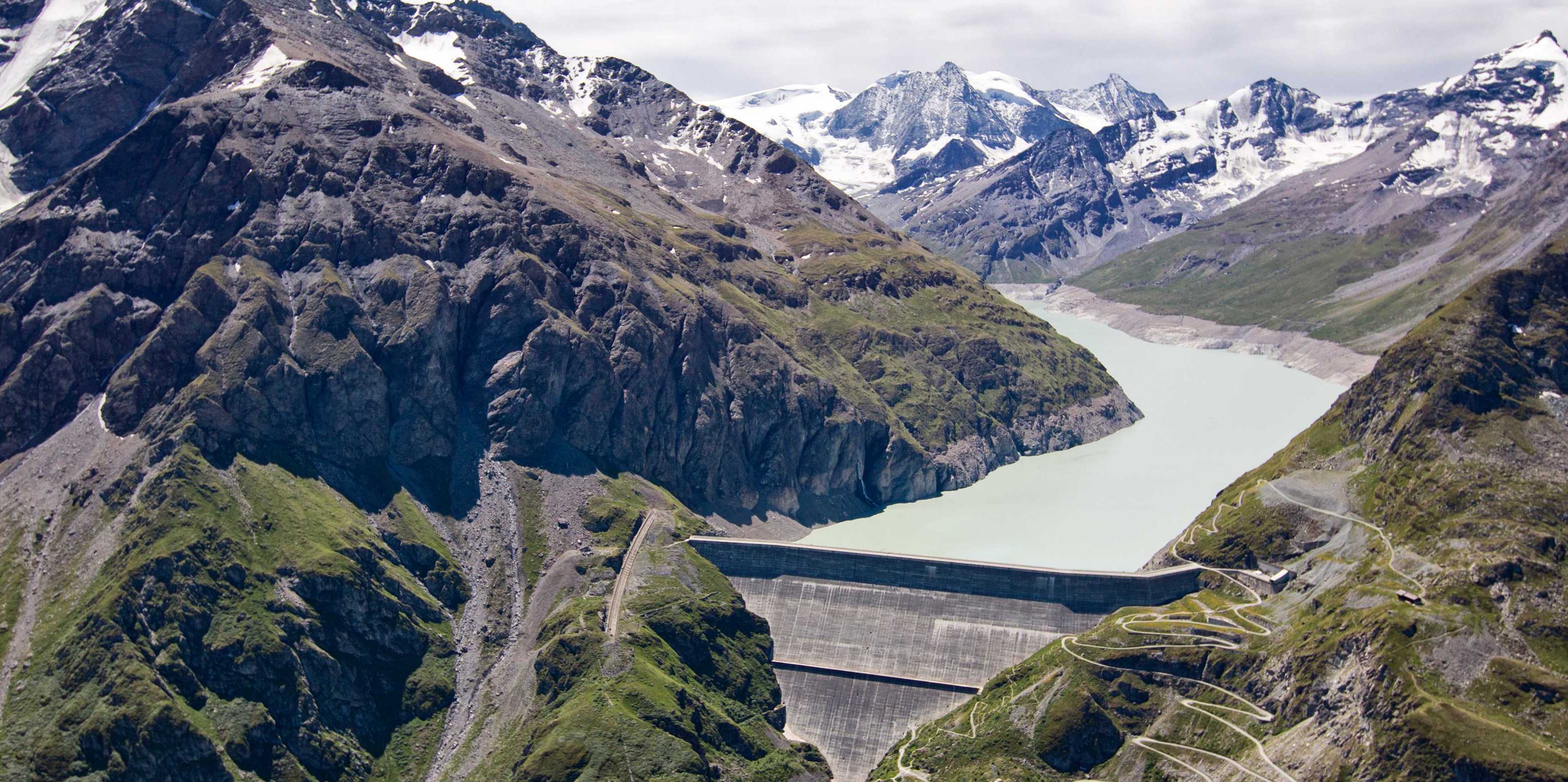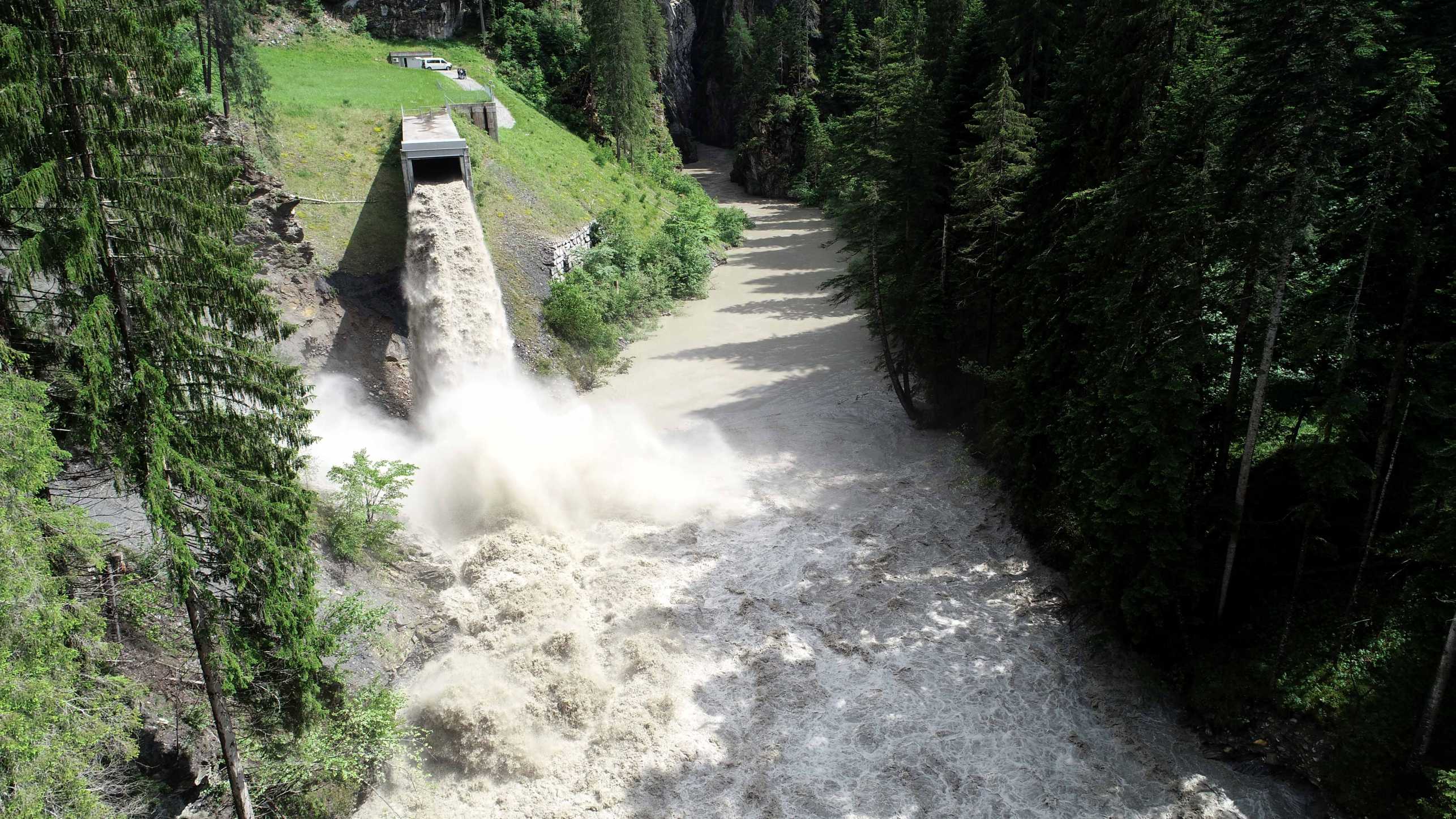
Researchers at ETH Zurich led by Robert Boes are developing specific solutions to optimise electricity production from Swiss hydropower plants. This will ensure that hydropower remains the backbone of Switzerland's electricity supply in the future.
In brief
- The power plants along the River Limmat can generate some 2 percent more electricity if Lake Zurich's water level is managed in line with an adapted regulation - as ETH Zurich researchers have shown.
- The researchers have also demonstrated how "sand traps" can be optimised to provide even better protection against turbine wear caused by sediment.
- They have furthermore shown, using the Solis hydropower reservoir as an example, that the bypass tunnel reduces annual sedimentation by over 80 percent when the plant is operated appropriately.
"Although Swiss hydropower is a proven technology, we must constantly work on optimising it. If we don't, electricity production and storage at existing plants will slowly erode," explains Robert Boes, who has headed the Laboratory of Hydraulics, Hydrology and Glaciology at ETH Zurich since 2009. This is because reservoirs in particular have a natural tendency to shrink due to rubble and gravel. And sediment in the waterways inevitably leads to wear and tear on the turbines over time.
ETH Zurich researchers have spent several years tackling these and other challenges in their research: they have developed solutions for efficient water management, calculated maintenance strategies for turbines and shown which locations have the potential for making the most effective and eco-friendly use of hydropower. This is how they are ensuring that hydropower remains the backbone of Switzerland's electricity supply in the future - especially in winter, when photovoltaic systems generate less power.
Better water management for run-of-river power plants
There are 11 run-of-river power plants along the 36 kilometres that the River Limmat flows from Lake Zurich until it meets the River Aare. Lake Zurich resembles a large head reservoir through which water is drained into the Limmat. The authorities use the weir system at Zurich's Platzspitz park to regulate the level of Lake Zurich and thus also how much water flows into the river. Besides playing a role in flood protection, navigation and ecology, this water level is particularly relevant for electricity production.
Boes and his research team recently showed in a study that optimised weir regulation at Platzspitz could allow around 2 percent more electricity to be generated in the power plants along the Limmat. This increase in efficiency would arise from a new management strategy that, first, permits lake water levels to be higher under today's regulations and, second, uses weather models to better adjust water level regulation in Lake Zurich to expected precipitation and inflow volumes.

As a general rule, the more evenly the water flows into run-of-river power plants, the more electricity they can produce. Especially in the case of small and medium levels of high water, the new regulations would make better use of the additional water present. "If the weather model predicts heavy rain, the smart weir system would release a little more water into the Limmat ahead of time. Then, when the predicted rain arrives, the lake would have more of a buffer and could continue to release water evenly into the Limmat despite the heavy rainfall," Boes explains. This would prevent the turbines from being overloaded by too much water. Of course, water managers would still have to comply with high-water regulations as well as ecological and other requirements.
Similar adaptations would also be possible on other rivers on the Swiss Plateau downstream of Alpine lakes. Boes and his team have calculated that electricity production from run-of-river power plants could be increased by around 100 gigawatt hours per year if weir systems were managed more intelligently. This would be enough to meet the annual electricity needs of around 25,000 four-person households.
Protecting turbines more effectively against sediment
The fine silt that rivers carry is the natural enemy of every hydropower turbine. It acts like sandpaper, causing turbines to wear out over time and generate significantly less electricity. Although this problem has been known for a long time, it has still not been fully resolved. While many power plants feature what are known as sand traps, these often fail to remove enough of the tiny particles from the water.
To increase the sand traps' effectiveness, and thus protect the turbines and avoid production losses, Boes and his team investigated which types of trap are particularly effective: "Long traps with a gentle bottom gradient, which make the water flow as slowly as possible, work best. They let the particles settle more easily to the floor," Boes says. These findings have already been used to improve the sand trap at the Susasca hydropower plant in Graubünden. However, longer traps also require more building materials and take up more space, making them expensive. As a result, decisions on which structural adaptations make economic and technical sense will differ from power plant to power plant.
Boulder bypasses for reservoirs
Weather-related erosion causes stones, gravel and other sediments to enter reservoirs via their water intake and reduce their storage volume. This problem, known as sedimentation, could reduce the storage capacity of Swiss reservoirs by around 7 percent by 2050. Today, small and medium-sized reservoirs use bypass tunnels as a structural measure against sedimentation. These tunnels guide stones, gravel and silt past the dam wall during floods. However, since floodwaters carry a great deal of sediment, the floor of the bypass tunnel is sometimes subject to pronounced wear.
Boes and his team have repeatedly looked into this problem in recent years. For example, the researchers investigated which materials are best suited to lining the floor of such tunnels. After countless tests, they came to the conclusion that high-strength granite is best able to withstand the heavy wear and tear in particularly harsh conditions. Based on this realisation, several bypass tunnels around the world have since been lined with granite.

Using the Solis reservoir in Graubünden as an example, the researchers were also able to prove how effective bypass tunnels actually are. The tunnel has reduced annual sedimentation in Solis by over 80 percent. However, this requires adjustments to storage management: the power plant's operators can further increase the tunnel's effectiveness by bringing the water level in the reservoir down low enough, as this enables the inflowing river to transport particularly large quantities of rock and sediment and discharge them via the tunnel. These findings are also relevant for the operators of numerous other power plants.

More electricity through optimised turbine maintenance
Another way to deal with the buildup of silt in reservoirs is to channel fine sediments into downstream sections of the river via the headrace and turbines. "The problem with this is that it causes more turbine wear. But it can still be a worthwhile measure for Alpine reservoirs if alternative measures, such as bypass tunnels, would be too expensive or not feasible," Boes says.
However, to better assess the feasibility of this approach to the problem of sedimentation, power plant operators need to know what damage the silt causes to the turbines and how much it reduces their efficiency. Boes and his team analysed this problem in one hydropower plant in Valais and another in Graubünden. The researchers used their findings to develop a model that predicts when a turbine will lose output due to sediment wear and ought to be replaced. This enables power plant operators to optimise the maintenance of their systems and ultimately produce more electricity.
The potential of Swiss hydropower
In addition to these specific solutions for existing hydropower plants, Boes and his team at ETH Zurich have also been conducting in-depth research in recent years into the potential for expanding Swiss hydropower. For example, his research group have investigated which areas of glacial retreat would be most suitable for new reservoirs and which existing dams might be raised to create more storage volume.
In 2020, the Swiss Federal Office of Energy used the results of these ETH studies on suitable sites as the basis for a roundtable discussion at which electricity companies, environmental protection organisations and cantons agreed on a list of 15 hydropower plant expansion and new construction projects. Acting as facilitator between the parties, ETH Professor Emeritus Michael Ambühl also played a part in helping the parties reach a compromise. These projects were subsequently incorporated into a new Electricity Supply Act. Whether this legislation comes into force ultimately depends on the Swiss electorate, which will vote in June on the expansion of hydropower and other renewable energy sources.
"Energy solutions for Switzerland" series
Switzerland aims to reduce its greenhouse gas emissions to net zero by 2050. This requires a fossil-free energy supply based on renewable and sustainable energy sources - an enormous challenge for the country. ETH Zurich is supporting the energy transition in Switzerland with specific solutions in the areas of research, teaching and knowledge transfer. We present some of these solutions in this series.






